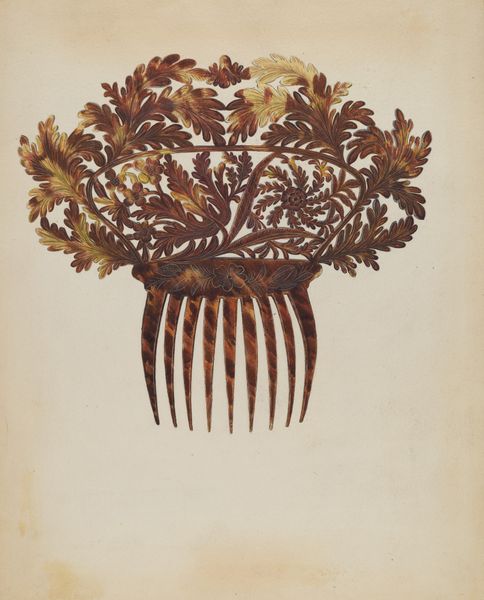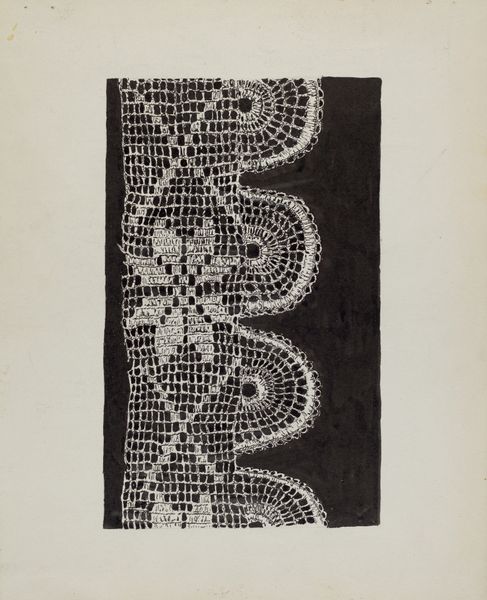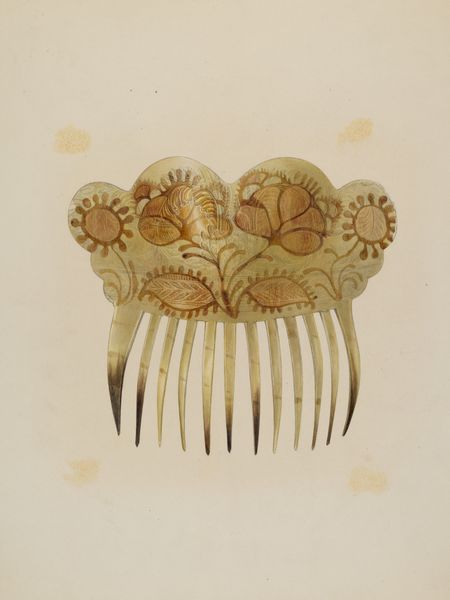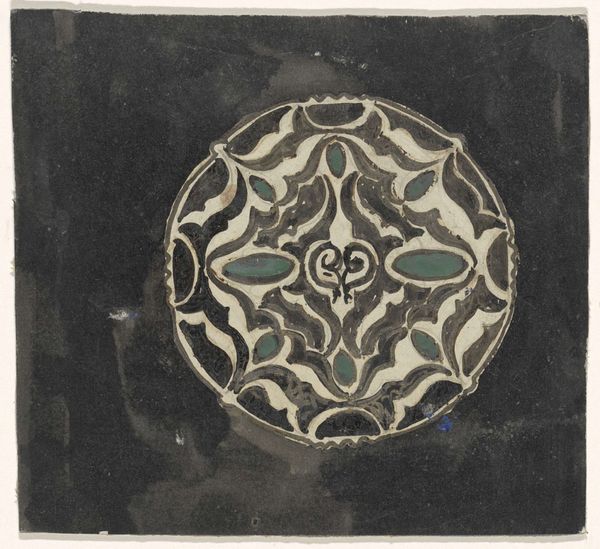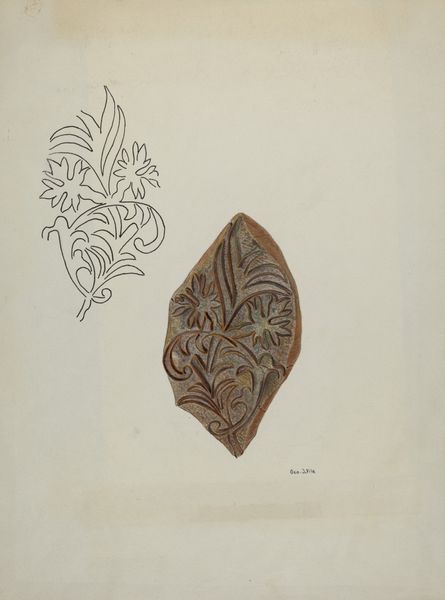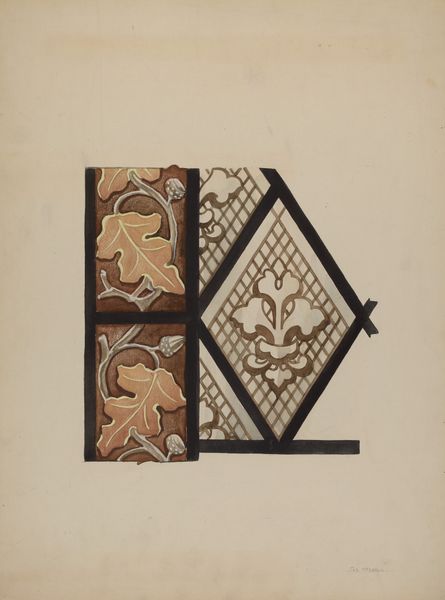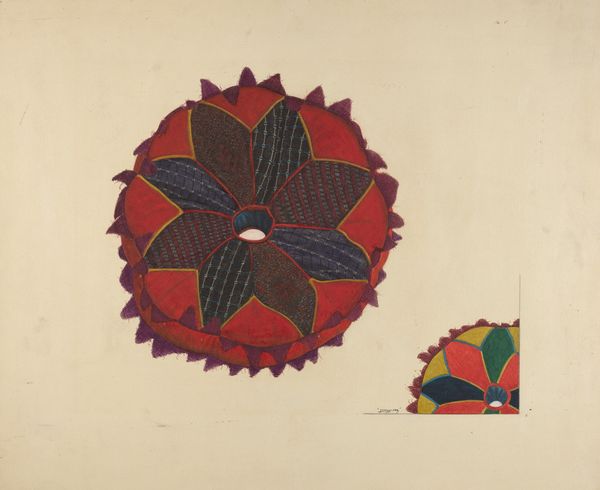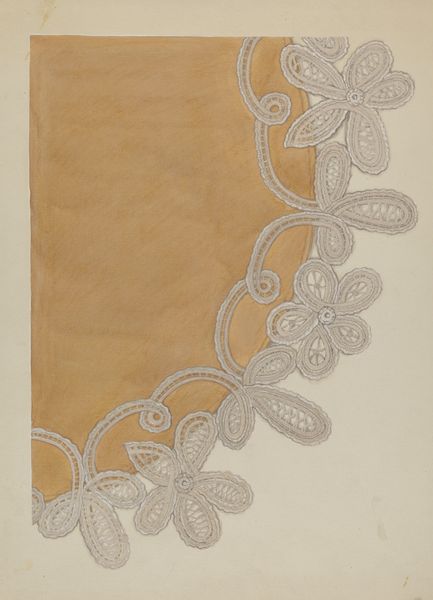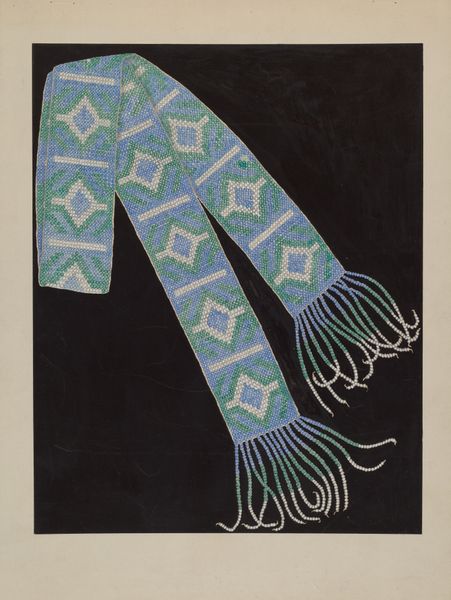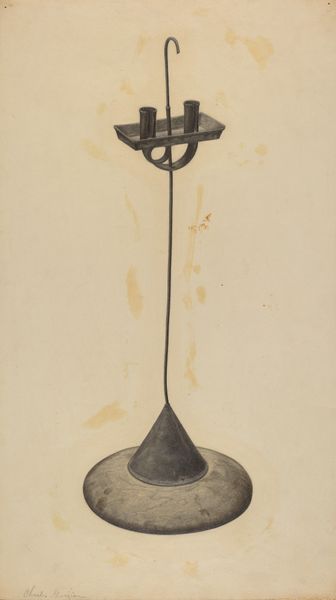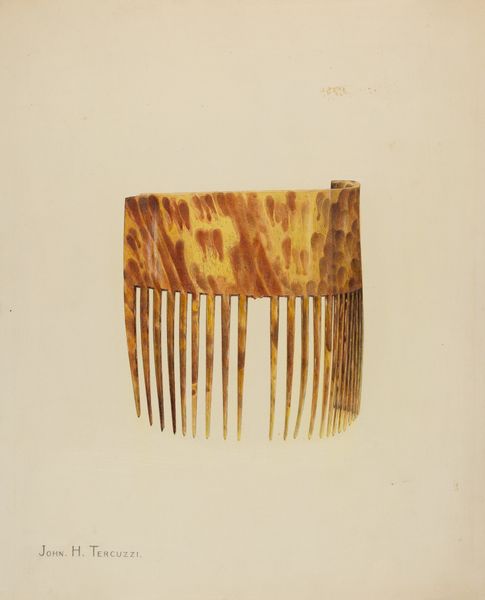
drawing, paper
#
drawing
#
negative space
#
decorative element
#
paper
#
watercolour illustration
#
decorative-art
Dimensions: overall: 28 x 22.9 cm (11 x 9 in.)
Copyright: National Gallery of Art: CC0 1.0
Curator: Let's explore this exquisite watercolor illustration from around 1936, simply titled "Comb." It comes to us from the talented hand of Gordena Jackson. What's your immediate take on it? Editor: The stark contrast immediately grabs you, doesn’t it? That near-black background makes the comb almost luminous. It seems like a straightforward depiction, but with a surprising, almost ethereal quality. It's striking. Curator: It certainly draws the eye. We should remember how such drawings functioned at this time, often as design templates. A comb was more than just a tool; it was a statement of elegance, a highly prized object, particularly within the rising culture of beauty and self-expression taking hold in the early to mid-20th century. Editor: Exactly! And it's crucial to look at the material qualities, here emphasized by the illustrative medium. The drawing focuses our attention on what the comb would be made of: maybe tortoiseshell, or perhaps celluloid, carefully carved and shaped, each swirl reflecting the artisanal labor involved. The materiality speaks of both luxury and a developing industrial process attempting to imitate natural beauty. Curator: A very fine point. It speaks volumes about aspiration and access. Was this luxury within reach for the masses or a signifier of a more elite social class? Think about the role of illustrated catalogues, advertisements, even fashion magazines, in creating and feeding these desires. The politics of imagery at work... Editor: And let's not forget how gender is deeply woven into the very concept of beauty, labor and artistry. Combs are associated with a certain set of traditional beauty rituals, and here Gordena Jackson transforms a humble, domestic item into something approaching art. Curator: Yes, elevating the everyday is very powerful. Jackson’s artistic talent offers a way of engaging with accessible and fashionable artifacts as statements within broader societal trends and, further, invites critical discourse. Editor: In the end, whether mass-produced or crafted by hand, a comb remains a tangible connection to daily practices and shifting ideals of feminine appearance, revealing social strata through its presence and use. A single tool carries all this weight. Curator: It's fascinating to consider how one detailed representation can evoke so many wider cultural dynamics, just waiting to be noticed in the composition of something as mundane as a comb. Editor: Precisely! Next time you encounter a seemingly ordinary object, take a second glance, for embedded inside you may discover hidden realms, stories etched in its very making, its significance beyond mere practicality.
Comments
No comments
Be the first to comment and join the conversation on the ultimate creative platform.
